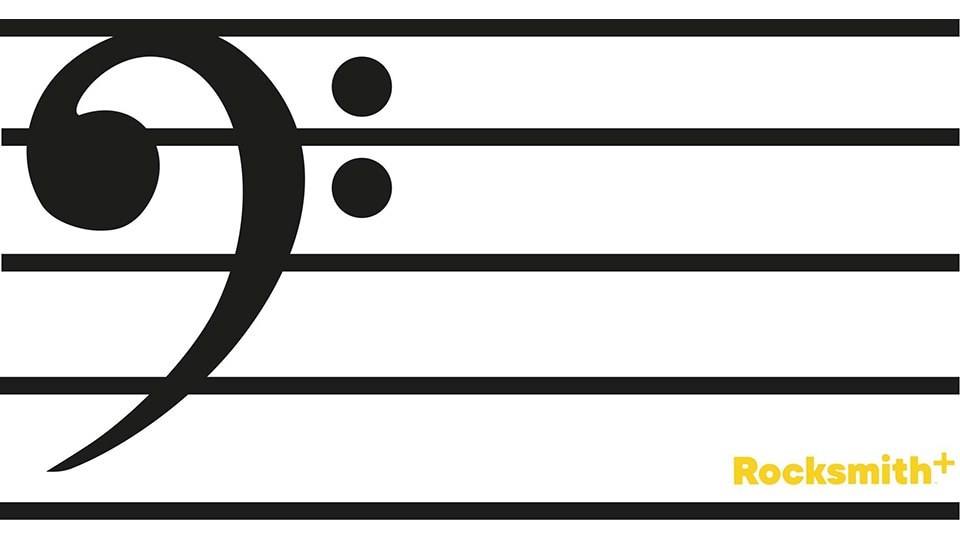The piano, with its majestic soundscape, offers a comprehensive exploration of the musical universe. To truly harness its potential, a pianist needs to navigate the world of sheet music. This brings us to the two pivotal notations: the bass clef and the treble clef.
While most are familiar with the high-pitched notes of the treble clef, the soulful depths of the bass clef are equally significant. This guide will journey through the bass clef, unveiling its secrets and enhancing your understanding of piano music.
What Is Sheet Music?
![[RS+] How To Read Bass Clef Notes for Piano SEO ARTICLE - sheet music](http://staticctf.ubisoft.com/J3yJr34U2pZ2Ieem48Dwy9uqj5PNUQTn/01aCYOAR18o1Skuvv0VTHV/969c1db843c61bcca6e58c175497e583/bass2.jpeg)
Before diving into the intricacies of the bass clef, it's essential to establish a foundation in sheet music. At its core, sheet music is the universal language of musicians, providing a visual representation of musical sounds.
The musical staff, or stave, acts as the backbone of this language. It comprises five lines and four spaces where each line or space corresponds to a specific note. While playing piano music, coordination between your left and right hands is crucial. The bass clef generally guides the left hand, painting the harmony (color), whereas the treble clef dictates the melodies and harmonies that the right hand dances through.
What Is a Bass Clef?
Often referred to as the F clef, the bass clef is distinguished by its unique symbol resembling a stylized "F." When looking at the bass clef, one can notice two dots placed symmetrically around the second line from the top. These dots signify the position of the note F on the stave, hence its alternative name.
Why is the bass clef so pivotal for pianists? The answer lies in its range. The bass clef captures the notes that resonate in the deeper, more soulful regions of sound. It gives voice to the foundational harmonies and rhythms that underpin any musical piece.
Moreover, understanding the bass clef notes and the musical alphabet is crucial for pianists because the left hand primarily navigates this territory. Additionally, a variety of instruments - from the mellow tones of the cello to the profound resonances of the tuba and the rhythmic foundation of the bass guitar - utilize the bass clef. Therefore, a solid grasp of the bass clef not only enriches your piano playing but also broadens your musical horizons across different instruments.
How To Navigate the Grand Staff
![[RS+] How To Read Bass Clef Notes for Piano SEO ARTICLE - grand staff](http://staticctf.ubisoft.com/J3yJr34U2pZ2Ieem48Dwy9uqj5PNUQTn/2ChPK2En1ZrtJtO8T3RTtf/af4a4925af9f81fe29217e0c3505d4c3/bass3.jpeg)
In the world of piano music, the grand staff stands as a harmonious union of the bass and treble clefs. Imagine it as a musical bridge where the two clefs meet, allowing for a seamless flow of notes across the keyboard. At the heart of this bridge is middle C, a neutral point that acts as a reference, connecting the lower and upper realms of sound.
When playing the piano, your left hand, guided by the bass clef, usually traverses the notes below middle C, crafting the foundation of your music. Meanwhile, your right hand, inspired by the treble clef, dances on the notes near the middle register or above, shaping melodies and intricate harmonies. Mastering this coordination is the essence of becoming a proficient pianist.
What Are the Lines and Spaces of Bass Clef?
Decoding the bass clef is much like learning a new language, where each line and space on the bass clef staff signifies a distinct note. To simplify this process, musicians over the ages have relied on clever mnemonics.
For the lines, starting from the bottom line and moving to the top line, the phrase "Good Birds Do Fly Away" offers a handy guide to remember the notes G, B, D, F, and A. Each word corresponds to a note, making it easier to identify them on the stave. On the flip side, for the spaces between these five lines, the mnemonic "All Cows Eat Grass" serves as a quick reference to the notes A, C, E, and G.
![[RS+] How To Read Bass Clef Notes for Piano SEO ARTICLE - line and spaces of bass clef](http://staticctf.ubisoft.com/J3yJr34U2pZ2Ieem48Dwy9uqj5PNUQTn/23hUN0LCztfF8p1CDQjnSO/85090ff35fada05e8dce3788dd7dc9a1/bass4.png)
But what about notes that fall outside this stave? Enter the ledger lines. These are short lines that extend the staff upwards or downwards, accommodating notes that go beyond the standard range of the bass clef staff. Recognizing these notes, whether they're on a space or a line of the staff, enhances your sight-reading skills and broadens your repertoire.
How To Master Advanced Notations in the Bass Clef
![[RS+] How To Read Bass Clef Notes for Piano SEO ARTICLE - advanced notations](http://staticctf.ubisoft.com/J3yJr34U2pZ2Ieem48Dwy9uqj5PNUQTn/3Gj9bbTvijEk7VIgHIWRBO/8e0c04ae580da6d6baacb3ab3088c4c4/bass5.jpg)
As you dive deeper into the world of music notation, you'll encounter symbols that modify or enhance the basic notes:
- Sharps and Flats: These symbols, denoted by # and ♭ respectively, indicate a slight pitch alteration of a note --- raising it (sharp) or lowering it (flat) by a half step.
- Clef Symbols: Beyond the standard bass clef, there are variations like the alto clef and tenor clef that have unique symbols and note placements. Recognizing these can widen your musical repertoire.
- Space and Line Notes: Beyond just memorizing the notes, understanding the difference between a space note and a note on the line is essential. This aids in quicker recognition and more fluid playing.
- Bass Clef Spaces and Lines: Delve deeper into how spaces and lines interact in compositions, focusing on unique patterns and chord structures.
Integrating these advanced notations into your practice routine refines your music reading capabilities and prepares you for more intricate compositions.
Where To Find the Bass Clef on the Piano Keyboard
![[RS+] How To Read Bass Clef Notes for Piano SEO ARTICLE - where to find bass clef](http://staticctf.ubisoft.com/J3yJr34U2pZ2Ieem48Dwy9uqj5PNUQTn/CuFAFuKvC5av3XXkuBsMc/31eed3da100beed2fe0d844c2ead5124/bass6.png)
Understanding the bass clef in theory is one thing; placing it in the context of the piano keyboard is another transformative experience. The bass clef primarily encompasses the left half of the keyboard:
- Middle C: Often considered the heart of the keyboard, middle C is the meeting point between the treble and bass clefs. It's the reference from which you'll determine other notes on the bass clef.
- Bass Notes: Notes like the F (represented by the two dots surrounding the second line from the top in the bass clef) or the A (the top line) can be easily located on the left section of the piano keyboard.
How To Sight-Read in the Bass Clef
Sight-reading is the ability to play music without prior rehearsal, solely based on the written notation. This skill, especially in the bass clef, is invaluable for pianists.
One keynote to be familiar with is the note F, represented by the bass clef symbol itself. It acts as a pivotal point for sight-reading bass clef compositions. While mnemonic devices like "Good Birds Do Fly Away" help in learning, they're also valuable during sight-reading. Having these phrases in the back of your mind speeds up note recognition.
Regularly challenge yourself with unfamiliar sheet music. Over time, your brain and fingers will sync more efficiently, recognizing patterns and sequences without hesitation.
Embracing the Journey of Music Notation
Music notation expresses the composer's intentions in a way that musicians can understand and interpret.
Even if you're just a listener, knowing the intricacies of music notation like the bass clef offers a deeper appreciation for the complexities and beauties of music compositions. As you progress in your piano lessons, this foundational knowledge aids in the exploration of diverse genres and styles, from classical sonatas to jazz improvisations.
With a blend of approachability and detail, remember that the journey of music, much like any other skill, requires patience, persistence, and passion. Whether you're playing the soulful tunes of a cello, the rhythmic patterns of a bass guitar, or the harmonious melodies of a piano, the bass clef serves as a trusted guide. Dive in, explore, and let the language of music resonate within you.
Sources:
Historic American Sheet Music | Duke University
The Bass Clef: An Overview | Hello Music Theory









